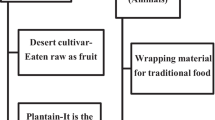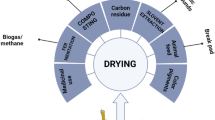Abstract
Due to the amount of nutrients available in the agroindustrial wastes, these can be converted into high added-value products by the action of microorganisms in solid-state bioprocesses. The aim of this work was to evaluate the growth physiology and lipase production of the fungus Lichtheimia ramosa using the following Brazilian savannah fruit wastes as substrates: bocaiuva (Acrocomia aculeata), pequi (Caryocar brasiliense), guavira (Campomanesia pubescens), araticum (Annona crassiflora) and seriguela (Spondias purpurea). These residues were triturated, homogenized, adjusted to pH 5.0 and 60 % moisture, sterilized and packaged in plastic tray-type bioreactors before inoculation with 10 % (w/v) of L. ramosa pre-culture medium. The cultivations were conducted in a bacteriological incubator at 30 °C for 40 days. Samples were taken every 5 days and fungi and bacteria contents, proximate composition and lipase activity were evaluated. The maximum fungal counting was observed between 25 and 35 days. L. ramosa reached the stationary phase next to 40 days in all substrates. Mesophilic and psicrophilic aerobic bacteria were not detected. Protein enrichment was obtained for all media, being superior in seriguela residues (391.66 %), followed by pequi (160.04 %), araticum (143.31 %), guavira (102.42 %), and bocaiuva (67.88 %). Lipase production was observed in all cultivated media, except in pequi residues that showed decreasing lipase activity. The higher production was observed in guavira (1.12 U/g) followed by araticum (0.58 U/g), seriguela (0.41 U/g) and bocaiuva (0.21 U/g) waste substrates. It was concluded that the studied fruit wastes have been successfully utilized as substrates for protein enrichment and lipase production with L. ramosa.


Similar content being viewed by others
References
Borlaug NE (2002) Feeding a world of 10 billion people: the miracle ahead. In: Bailey R (ed) Global warming and other eco-myths. Competitive Enterprise Institute, Roseville, pp 29–60
Silva MR, Lacerda DBCL, Santos GG, Martins DMO (2008) Chemical characterization of native species of fruits from savanna ecosystem. Ciênc Rural 38:1790–1793
Vera R, Naves RV, Nascimento JL, Chaves LJ, Leandro WM, Souza ERB (2005) Physical characterization of pequi fruits (Caryocar brasiliense Camb.) in Goiás state. Pesq Agropec Trop 35:71–79
Barbosa DCA, Alves JLH, Prazeres SM, Paiva AMA (1989) Phenological data from 10 tree species from caatinga (Alagoinha-PE). Acta Bot Bras 3:109–117
Rodrigues SR, Nantes LR, Souza SR, Abot AR, Uchôa-Fernandes MA (2006) Frugivorous flies (Diptera, Tephritoidea) collected in Aquidauana, MS. Rev Bras Entomol 50:131–134
Couto SR, Sanromán MA (2005) Application of solid-state fermentation to ligninolytic enzyme production. Biochem Eng J 22:211–219
Raimbault M (1998) General and microbiological aspects of solid substrate fermentation. Electron J Biotechnol 1:1–15
Castilho LR, Mitchell DA, Freire DMG (2009) Production of polyhydroxyalkanoates (PHAs) from waste materials and by-products by submerged and solid-state fermentation. Bioresour Technol 100:5996–6009
Abu OA, Tewe OO, Losel DM, Onifade AA (2000) Changes in lipid, fatty acids and protein composition of sweet potato (Ipomoea batatas) after solid-state fungal fermentation. Bioresour Technol 72:189–192
Jin B, Yan XQ, Yu Q, Van Leeuwen JH (2002) A comprehensive pilot plant system for fungal biomass protein production and wastewater reclamation. Adv Environ Res 6:179–189
Fonseca GG, Gandra EA, Sclowitz LF, Antunes APC, Costa JAV (2009) Protein enrichment and digestibility of soft rush (Juncus effusus) and rice residues using edible mushrooms Pleurotus ostreatus and Pleurotus sajor-caju. World J Microb Biot 25:449–456
Silveira CM, Oliveira MS, Badiale-Furlong E (2010) Lipid content and fatty acid profile of defatted rice bran and wheat bran submitted to solid state fermentation by Aspergillus oryzae. Bol Cent Pesq Proc Alim 28:133–140
Oliveira MS, Feddern V, Kupski L, Cipolatti EP, Badiale-Furlong E, Souza-Soares LA (2011) Changes in lipid, fatty acids and phospholipids composition of whole rice bran after solid-state fungal fermentation. Bioresour Technol 102:8335–8338
Nigam P, Singh D (1996) Processing of agricultural wastes in solid state fermentation of microbial protein. J Sci Ind Res 55:373–380
Godoy MG, Gutarra MLE, Maciel FM, Felix SP, Bevilaqua JV, Machado OLT, Freire DMG (2009) Use of a low-cost methodology for biodetoxification of castor bean waste and lipase production. Enzym Microb Tech 44:317–322
Hernández-Rodríguez B, Córdova J, Bárzana E, Favela-Torres E (2009) Effects of organic solvents on activity and stability of lipases produced by thermotolerant fungi in solid-state fermentation. J Mol Catal B Enzym 61:136–142
Sun SY, Xu Y, Wang D (2009) Novel minor lipase from Rhizopus chinensis during solid-state fermentation: biochemical characterization and its esterification potential for ester synthesis. Bioresour Technol 100:2607–2612
Davidson WS, Saxena RK, Ghosh PK, Gupta R, Bradoo S, Gulati R (1999) Microbial lipases: potential biocatalysts for the future industry. Curr Sci 77:101–115
Cavalcanti EDC, Gutarra MLE, Freire DMG, Castilho LR, Júnior GLS (2005) Lipase production by solid-state fermentation in fixed-bed bioreactors. Braz Arch Biol Technol 48:79–84
Carvalho PO, Calafatti SA, Marassi M, Silva DM, Conteseni FJ, Bizaco R, Macedo GA (2005) Potential of enantioselective biocatalysis by microbial lipases. Quím Nova 28:614–621
Cammarota MC, Freire DMG (2006) A review on hydrolytic enzymes in the treatment of wastewater with high oil and grease content. Bioresour Technol 97:2195–2210
Freire DMG, Castilho LR (2000) Lipases produced by submerged fermentation and in solid medium. Rev Bras Farm 81:48–56
Kirk PM, Cannon PF, David JC, Stalpers JA (2001) Ainsworth and Bisby’s dictionary of the Fungi, 9th edn. CABI Publishing, Wallingford
Hoffmann K, Discher S, Voigt K (2007) Revision of the genus Absidia (Mucorales, Zygomycetes) based on physiological, phylogenetic, and morphological characters; thermotolerant Absidia spp. form a coherent group. Mycocladiaceae Fam. nov. Mycol Res 111:1169–1183
Garcia-Hermoso D, Hoinard D, Gantier JC, Grenouillet F, Dromer F, Dannaouil E (2009) Molecular and phenotypic evaluation of Lichtheimia corymbifera (formerly Absidia corymbifera) complex isolates associated with human Mucormycosis: rehabilitation of L. ramosa. J Clin Microbiol 47:3862–3870
Guarro J (2011) Taxonomía y biologia de lós causantes de infección em humanos. Enferm Infecc Microbiol Clin 30:33–39
Ghatora SK, Chadha BS, Badhan AK, Saini HS, Bhat MK (2006) Identification and characterization of diverse xylanases from thermophilic and thermotolerant fungi. Bioresources 1:18–33
Silva AM, Henriques MLOF, Barboza AGSDF, Lins CIM, Ribeiro DLR, Albuquerque CDC, Campos-Takaki GM (2011) Color removal of algodoais river water by chitosan obtained from Absidia corymbifera. Asian Chitin J 7:97–104
Neves MLC, Silva MF, Souza-Motta CM, Spier MR, Soccol CR, Porto TSP, Moreira KA, Porto ALF (2011) Lichtheimia blakesleeana as a new potencial producer of phytase and xylanase. Molecules 16:4807–4817
Silva CAA, Lacerda MPF, Fonseca GG (2013) Biotransformation of pequi and guavira fruit wastes via solid state bioprocess using Pleurotus sajor-caju. Int J Biosci Biochem Bioinf 3:88–92
AOAC (1995) Association of official analytical chemists. Official methods of analysis, 16th edn. AOAC, Washington
ICMSF (1978) International Commission on Microbiological Specifications for Foods. Microorganisms in foods: their significance and methods of enumeration. University of Toronto Press, Toronto
ICMSF (1986) International Commission on Microbiological Specifications for Foods. Microorganisms in foods. Sampling for microbiological analysis: principles and scientific applications, vol. 2. University of Toronto Press, Toronto
Leite RSR, Bocchini DA, Martins ES, Silva D, Gomes E, Silva R (2007) Production of cellulolytic and hemicellulolytic enzymes from Aureobasidium pulluans on solid state fermentation. Appl Biochem Biotech 137:281–288
Bussamara R, Fuentefria AM, Oliveira ES, Broetto L, Simcikova M, Valente P, Schrank A, Vainstein MH (2010) Isolation of a lipase-secreting yeast for enzyme production in a pilot-plant scale batch fermentation. Bioresour Technol 101:268–275
Silva WOB, Mitidieri S, Schrank A, Vainstein MH (2005) Production and extraction of an extracellular lipase from the entomopathogenic fungus Metarhizium anisopliae. Process Biochem 40:321–326
Liu Z, Zhenming C, Wang L, Jing L (2008) Production, purification and characterization of an extracellular lipase from Aureobasidium pullulans HN2.3 with potential application for the hydrolysis of edible oils. Biochem Eng J 40:445–451
Raimbault M, Revah S, Pina F, Villalobos PJ (1985) Protein enrichment of cassava by solid state fermentation using molds isolated from traditional foods. J Ferment Bioeng 63:395–399
Yang SS, Jang HD, Liew CM, Du-Preez JC (1993) Protein enrichment of sweet potato residue by solid state cultivation with mono-and co-cultures of amylolytic fungi. World J Microb Biot 32:258–264
Yang SS (1988) Protein enrichment of sweet potato residue with amylolytic yeasts by solid-state fermentation. Biotechnol Bioeng 32:886–890
Silveira CM, Badiale-Furlong E (2007) Characterization of nitrogenated compounds in solid state fermented bran. Cienc Tecnol Aliment 27:805–811
Moda EM, Horii J, Spoto MHF (2005) Edible mushroom Pleurotus sajor-caju production on washed and supplemented sugarcane bagasse. Sci Agric 62:127–132
Araújo LF, Silva FLH, Brito EA, Oliveira S, Santos ES (2008) Protein enrichment of cactus pear with Saccharomyces cerevisiae for ruminants feeding. Arq Bras Med Vet Zootec 60:401–407
Silva CF, Batista LR, Schwan RF (2008) Incidence and distribution of filamentous fungi during fermentation, drying and storage of coffee (Coffea arabica L.) beans. Braz J Microbiol 39:521–526
Amorim GM, Santos TC, Pacheco CSV, Barreto IMA, Freire DMG, Franco M (2012) Fermentation of cocoa meal by Aspergillus niger to obtain lipase.J Est Tecnol Eng 8:24–27
Gombert AK, Pinto AL, Castilho LR, Freire DMG (1999) Lipase production by Penicillium restrictum in solid-state fermentation using babassu oil cake as substrate. Process Biochem 35:85–90
Rao PV, Jayaraman K, Lakshmanan CM (1993) Production of lipase by Candida rugosa in solid state fermentation. 1: determination of significant process variables. Process Biochem 28:385–389
Hiane PA, Ramos MIL, Ramos-Filho MM, Pereira JG (1992) Proximate composition and fatty acid profile of some native fruits of the state of Mato Grosso do Sul. Bol Cent Pesq Proc Alim 10:35–42
Mariano RGB, Couri S, Freitas SP (2009) Enzymatic technology to improve oil extraction from Caryocar brasiliense Camb (pequi) pulp. Rev Bras Frutic 31:637–643
Chartrain M, Marcin C, Katz L, Salmon P, Brix T, Buckland B, Greasham R (1993) Enhancement of lipase production during fedbatch cultivation of Pseudomonas aeruginosa MB5001. J Ferment Bioeng 76:487–492
Acknowledgments
The authors acknowledge the financial support provided by the Scientific and Technological Research National Council of Brazil (CNPq).
Author information
Authors and Affiliations
Corresponding author
Rights and permissions
About this article
Cite this article
de Andrade Silva, C.A., Lacerda, M.P.F., Leite, R.S.R. et al. Physiology of Lichtheimia ramosa obtained by solid-state bioprocess using fruit wastes as substrate. Bioprocess Biosyst Eng 37, 727–734 (2014). https://doi.org/10.1007/s00449-013-1043-y
Received:
Accepted:
Published:
Issue Date:
DOI: https://doi.org/10.1007/s00449-013-1043-y




